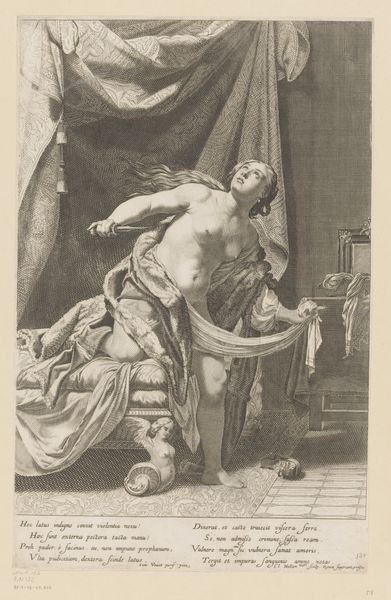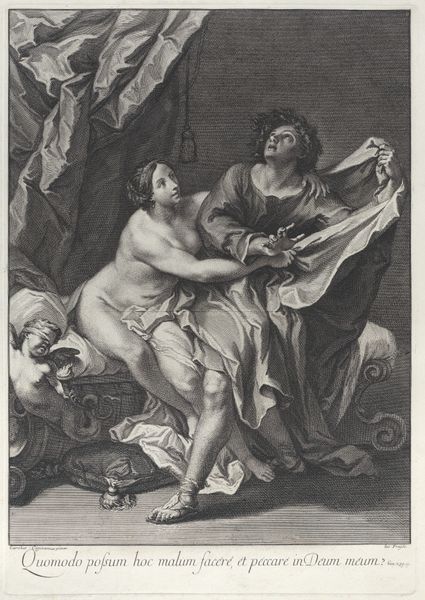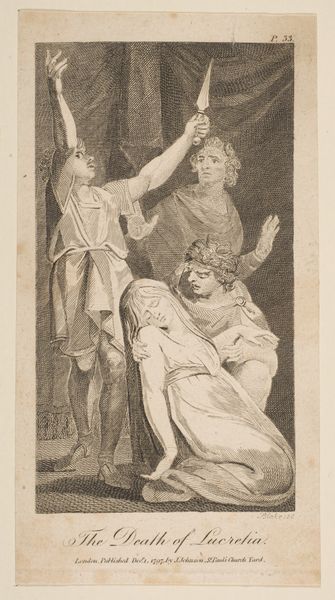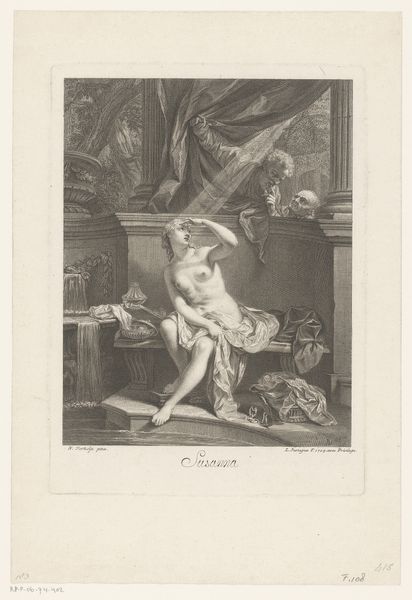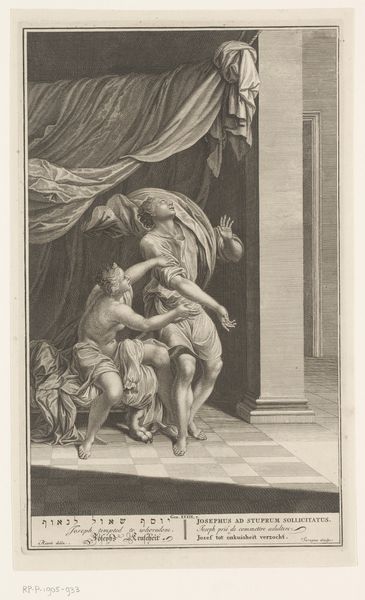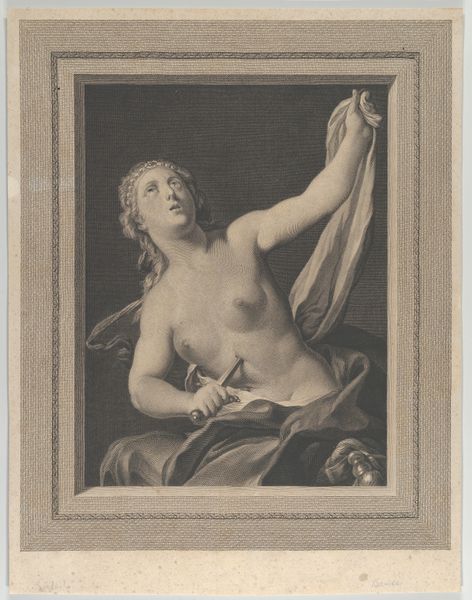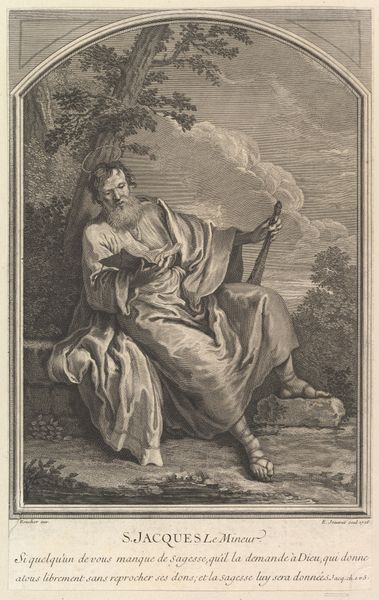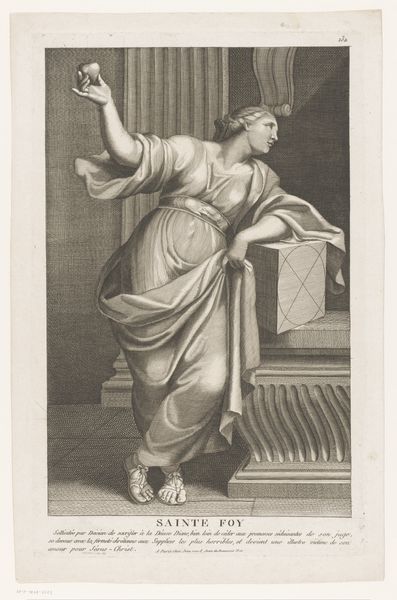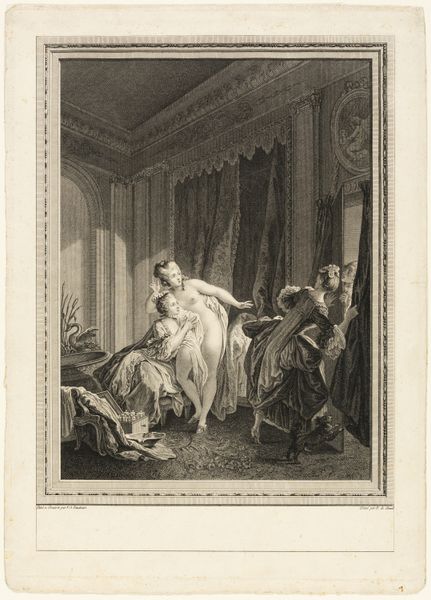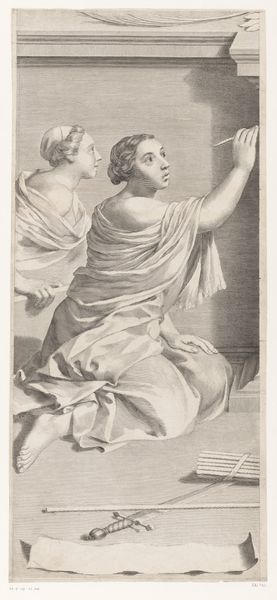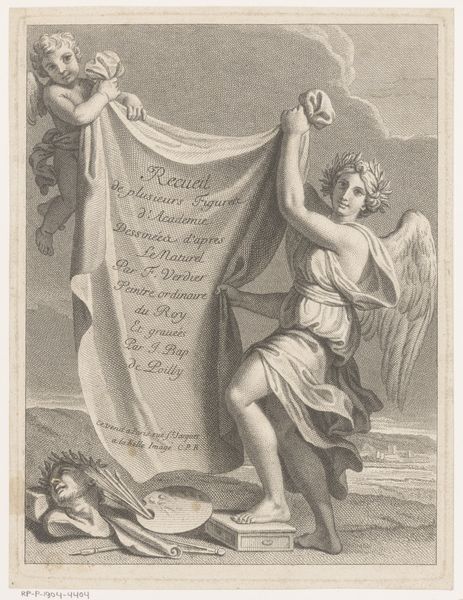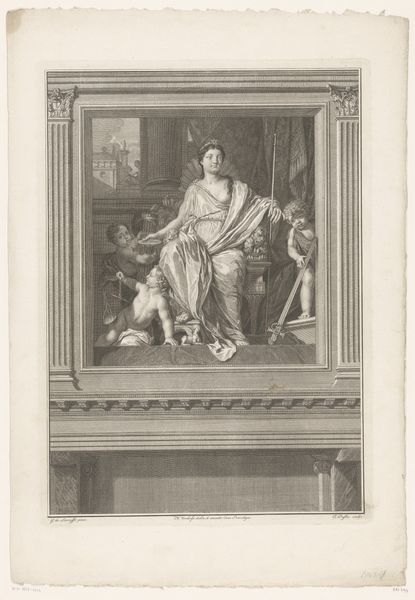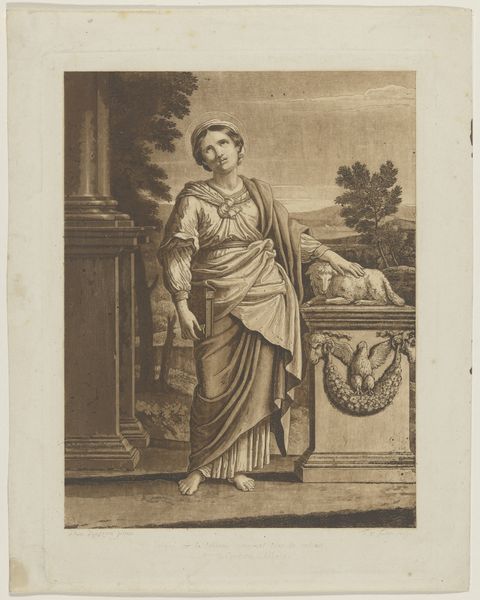
engraving
#
baroque
#
old engraving style
#
figuration
#
19th century
#
line
#
history-painting
#
nude
#
engraving
Dimensions: height 526 mm, width 326 mm
Copyright: Rijks Museum: Open Domain
Editor: This is "Death of Lucretia" by Nicolas Gabriel Dupuis, created sometime between 1708 and 1757. It’s an engraving, and what strikes me is how theatrical it feels, almost staged. How do you interpret this work? Curator: The figure of Lucretia, for centuries, has been a powerful symbol of virtue and defiance in the face of tyranny. The image becomes less about the individual and more about the collective understanding of Roman virtue and the birth of the Republic. Editor: So, it's less about this *particular* woman and more about what she represents. How does the artist communicate that through visual cues? Curator: Notice her gaze, directed upwards. It is not an expression of fear or despair but one of resolve. This upward glance carries the weight of piety and transcendence. Editor: You're saying the gaze isn't just aesthetic; it's almost a spiritual declaration? Curator: Precisely. This is reinforced by the symbolic presence of the dagger. Here, the dagger is less an instrument of suicide and more a potent symbol of agency. What does the surrounding setting evoke? Editor: I see a stark contrast. The bedclothes are disarrayed, but there's also an almost pristine jewelry box in the background. Does that signify a clash between personal turmoil and enduring value or perhaps material versus spiritual? Curator: It could indicate an appeal to the eternal. Death in defense of honor and tradition promises earthly chaos will be balanced by divine or communal harmony. I appreciate your thoughtful observations! Editor: Thanks! Thinking about it now, I see that these visual symbols are doing more than just telling a story; they're enshrining a complex system of values.
Comments
No comments
Be the first to comment and join the conversation on the ultimate creative platform.
